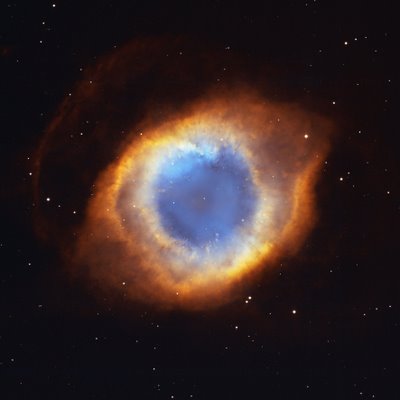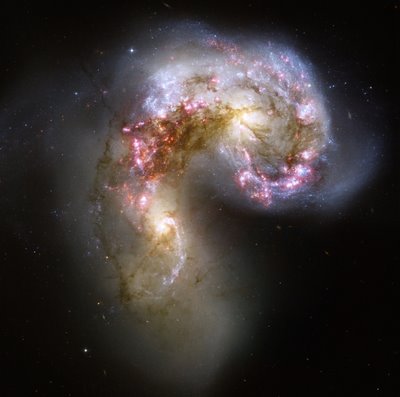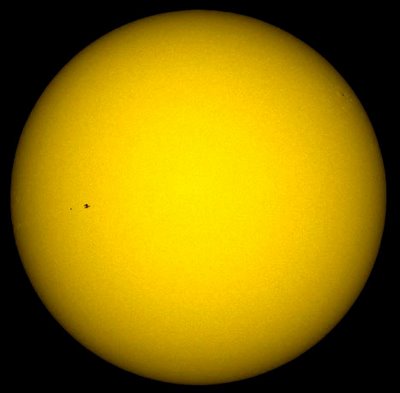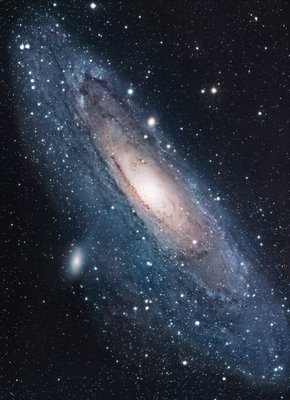Wednesday, May 09, 2012
Earth And The Space
Sunday, February 12, 2012
3d Moon, Picture By Jeffrey Ambroziak
Thanks to a new 3-D map of the moon, earthbound viewers can see its landscape with a clarity that only Apollo’s astronauts have previously enjoyed.
“NASA put out some amazing digital elevation data of the moon late last year, but nobody had released it in true 3-D. So I decided I would,” said Jeffrey Ambroziak, the map’s creator.
Ambroziak recently launched a Kickstarter project to fund the printing of a full-resolution, two-sided “National Geographic-style” 3-D moon map. The image above is a section of that full map. (No 3-D glasses? Follow Wired’s How-To Wiki article on creating a custom pair, which in a pinch can be done with just a CD jewel box and some markers.)
Traditional 3-D images create the illusion of depth by tricking your brain into merging two slightly different images. Red-blue anaglyphs that superimpose separate images use this technique, as do 3-D movies that alternate perspective in every second frame.
Ambroziak doesn’t consider these kinds of images to be truly 3-D, as viewers must look at them from a specific distance and angle. Glancing from the sides, or walking toward or away from the image, distorts or destroys the illusion.
“If you watch Avatar in 3-D and move toward the screen, it becomes so distorted you can’t watch it. With maps, a single perspective doesn’t cut it. You want to stick your nose right up there,” said Ambroziak.
Frustrated by these limitations, Ambroziak and his father, Russell Ambroziak, developed an algorithm to give 3-D maps a broader perspective. The trick works by both altering the brightness of pixels and stretching or compressing them, based on where they’re supposed to appear relative to a predetermined perspective.
In 1999 they filed a patent for their creation, called the Ambroziak Infinite Perspective Projection (or AIPP). At the time, however, there wasn’t enough data to make a moon map.
“Twelve years ago, when I invented the format, I was scratching the bottom of the barrel to get any data at all. Now there’s so much free data out there just waiting to be transformed,” said Ambroziak, who used NASA’s latest Lunar Reconnaissance Orbiter Camera data to create the new map.
The map allows for 3-D viewing from nearly any angle or distance. The moon map, along with his 3-D maps of Antarctica and Mars, have been displayed at the Underline art gallery in Manhattan. They’ve also captured the interest of the U.S. military, which could use such maps to train pilots over realistic terrain.
If enough people are interested in the full version of his new lunar map, which covers about 8 percent of the moon’s surface, he’ll look into crafting the remaining 92 percent of NASA’s lunar elevation data into 3-D maps.
“Until recently I’ve resisted licensing [AIPP],” he said. “But I loved the idea of using Kickstarter to gauge people’s interest. We’ll have to see what happens.”
Image: This AIPP image is a 1000-by-666-pixel section of the full-resolution 3-D map, which will be a 5398-by-7000-pixel graphic. The perspective is set about 10,500 feet above the bottom of the Heinsius crater, a three-crater formation just below center. The topological elevation tops out at 3,940 feet on piles of ejected rock at the lip of Capuanus crater at top left. (Jeffrey Ambroziak)
Monday, January 09, 2012
Galaxy
"See yonder, lo, the Galaxyë
Which men clepeth the Milky Wey,
For hit is whyt."
—Geoffrey Chaucer. The House of Fame, c. 1380.
Wednesday, October 19, 2011
Sun Bursts
Tuesday, March 06, 2007
Moon Above North Pole
Monday, March 05, 2007
Blinding Saturn
Surely one of the most gorgeous sights the solar system has to offer, Saturn sits enveloped by the full splendor of its stately rings. Taking in the rings in their entirety was the focus of this particular imaging sequence. Therefore, the camera exposure times were just right to capture the dark-side of its rings, but longer than that required to properly expose the globe of sunlit Saturn. Consequently, the sunlit half of the planet is overexposed.
Between the blinding light of day and the dark of night, there is a strip of twilight on the globe where colorful details in the atmosphere can be seen. Bright clouds dot the bluish-grey northern polar region here. In the south, the planet's night side glows golden in reflected light from the rings' sunlit face.
Saturn's shadow stretches completely across the rings in this view, taken on Jan. 19, 2007, in contrast to what Cassini saw when it arrived in 2004 (see Frigid Ringworld).
The view is a mosaic of 36 images -- that is, 12 separate sets of red, green and blue images -- taken over the course of about 2.5 hours, as Cassini scanned across the entire main ring system.
This view looks toward the unlit side of the rings from about 40 degrees above the ring plane.
The images in this natural-color view were obtained with the Cassini spacecraft wide-angle camera at a distance of approximately 1.23 million kilometers (764,000 miles) from Saturn. Image scale is 70 kilometers (44 miles) per pixel.
The Cassini-Huygens mission is a cooperative project of NASA, the European Space Agency and the Italian Space Agency. The Jet Propulsion Laboratory, a division of the California Institute of Technology in Pasadena, manages the mission for NASA's Science Mission Directorate, Washington, D.C. The Cassini orbiter and its two onboard cameras were designed, developed and assembled at JPL. The imaging operations center is based at the Space Science Institute in Boulder, Colo.
For more information about the Cassini-Huygens mission visit http://saturn.jpl.nasa.gov .
Credit: NASA/JPL/Space Science Institute
Thursday, February 22, 2007
We Are Small And Insignificant


 I certainly thought this was enlightening. Beyond our sun ... It's a big universe.
I certainly thought this was enlightening. Beyond our sun ... It's a big universe.
 Antares is the 15th brightest star in the sky. It is more than 1000 light years away.
Antares is the 15th brightest star in the sky. It is more than 1000 light years away. Now how big are you?
And, how big are the things that will upset you today?
Or, for that matter, the things that are important?
KEEP LIFE IN PERSPECTIVE!
Friday, December 29, 2006
Earth At Night
Friday, December 22, 2006
Mt. Everest From Space
Thursday, October 26, 2006
Ultra Deep Field
Astronomers at the Space Telescope Science Institute today unveiled the deepest portrait of the visible universe ever achieved by humankind. Called the Hubble Ultra Deep Field (HUDF), the million-second-long exposure reveals the first galaxies to emerge from the so-called "dark ages," the time shortly after the big bang when the first stars reheated the cold, dark universe. The new image should offer new insights into what types of objects reheated the universe long ago.
Tuesday, October 24, 2006
Top 10 Amazing Hubble Photos

Hubble's coverage of light of different colors (its "spectral range") extends from the ultraviolet, through the visible (to which our eyes are sensitive), and into the near-infrared. Hubble's primary mirror is 2.4 meters (94.5 inches) in diameter. Hubble is not large by ground-based standards but it achieves heroically in space. Hubble orbits Earth every 97 minutes, 575 kilometers (360 miles) above the Earth's surface.
 Deep space
Deep space  Eye-catching celestial helix
Eye-catching celestial helix Hubble's view of the Antennae galaxies
Hubble's view of the Antennae galaxies Jupiter's moon Io casts a shadow as it transits Jupiter
Jupiter's moon Io casts a shadow as it transits Jupiter Whirlpool Galaxy M51
Whirlpool Galaxy M51Saturday, October 14, 2006
Spectacular Photo of Shuttle, Space Station And The Sun
 What looks like a small speck on the photo above, when you take a closer look below, you suddenly see the space shuttle and space center.
What looks like a small speck on the photo above, when you take a closer look below, you suddenly see the space shuttle and space center. The image was taken in Normandy by French astrophotographer Thierry Legault. He used a digital camera attached to a £5,000 specially kitted-out telescope.
The image was taken in Normandy by French astrophotographer Thierry Legault. He used a digital camera attached to a £5,000 specially kitted-out telescope.
The shuttle, which returned last week from a 12-day mission, and the space station can be seen in orbit 250 miles above the earth while the sun is 93 million miles away.
Sunday, October 01, 2006
Comets
The image of Hale-Bopp to the left was taken by Phil Langill using the 16" telescope.
Comets are small, fragile, irregularly shaped bodies composed of a mixture of dust grains and frozen gases and are probably left over from the formation of the Solar System. They have highly elliptical orbits that bring them very close to the Sun and swing them deeply into space, often beyond the orbit of Pluto. Comet structures are diverse and very dynamic, but they all develop a surrounding cloud of diffuse material, called a coma, that usually grows in size and brightness as the comet approaches the Sun. Usually a small, bright nucleus (less than 10 km in diameter) is visible in the middle of the coma. The coma and the nucleus together constitute the head of the comet.
As comets approach the Sun they develop enormous tails of luminous material that extend for millions of kilometers from the head, away from the Sun. When far from the Sun, the nucleus is very cold and its material is frozen solid within the nucleus. In this state comets are sometimes referred to as a "dirty iceberg" or "dirty snowball," since over half of their material is ice. When a comet approaches within a few Astronomical Units (AU) of the Sun, the surface of the nucleus begins to warm, and volatiles evaporate. The evaporated molecules boil off and carry small solid particles with them, forming the comet's coma of gas and dust.
When the nucleus is frozen, it can be seen only by reflected sunlight. However, when a coma develops, dust reflects still more sunlight, and gas in the coma absorbs ultraviolet radiation and begins to fluoresce. At about 5 AU from the Sun, fluorescence usually becomes more intense than reflected light.

The image of Hyakutake to the left was taken by Phil Langill using the 16" telescope.
Thursday, September 07, 2006
Moon
The Moon is Earth's only natural satellite. It has no formal English name other than "the Moon", although in English it is occasionally called Luna (Latin for moon), or Selene (Greek for moon), to distinguish it from the generic term "moon" (natural satellites of other planets are also called moons). Its symbol is a crescent. The terms lunar, selene/seleno-, and -cynthion (from the Lunar deities Selene and Cynthia) refer to the Moon (aposelene, selenocentric, pericynthion, etc.).
The average distance from the Moon to the Earth is 384,403 kilometres (238,857 mi). The Moon's diameter is 3,476 kilometres (2,160 mi). Reflected sunlight from the Moon's surface reaches Earth in 1.3 seconds (at the speed of light). The Moon is the Solar System's fifth largest moon and is the second most massive moon.
The first man-made object to land on the Moon was Luna 2 in 1959; the first photographs of the otherwise occluded far side of the Moon were made by Luna 3 in the same year, and the first people to land on the Moon came aboard Apollo 11 in 1969. It is the only celestial body other than the Earth upon which humans have set foot.

For full size click here!
Saturday, August 26, 2006
Ash Cloud from Mount Ubinas, Peru
This oblique image (looking at an angle) from the International Space Station (ISS) captures an ash cloud first observed on satellite imagery at 11:00 GMT on August 14, 2006. An ISS astronaut took this picture one hour and 45 minutes later. The ash cloud caused the Buenos Aires Volcanic Ash Advisory Center to issue an aviation hazard warning. Minor to moderately explosive eruptions of ash and pumice characterize modern activity at Ubinas. Pumice and ash blanket the volcanic cone and surrounding area, giving this image an overall gray appearance. Shadowing of the western flank of Ubinas throws several lava flows into sharp relief, and highlights the steep slopes at the flow fronts—common characteristics of thick, slow-moving lavas. The most recent major eruption of Ubinas occurred in 1969, although its historical record of activity extends back to the 16th century.
Astronaut photograph ISS013-E-66488 was acquired August 14, 2006, with a Kodak 760C digital camera using an 800 mm lens, and is provided by the ISS Crew Earth Observations experiment and the Image Science & Analysis Group, Johnson Space Center. The image in this article has been cropped and enhanced to improve contrast. Lens artifacts have also been removed. The International Space Station Program supports the laboratory to help astronauts take pictures of Earth that will be of the greatest value to scientists and the public, and to make those images freely available on the Internet. Additional images taken by astronauts and cosmonauts can be viewed at the NASA/JSC Gateway to Astronaut Photography of Earth.
Friday, June 16, 2006
Space



"Space is big. You just won't believe how vastly, hugely, mind-bogglingly big it is. I mean, you may think it's a long way down the road to the drug store, but that's just peanuts to space."


























